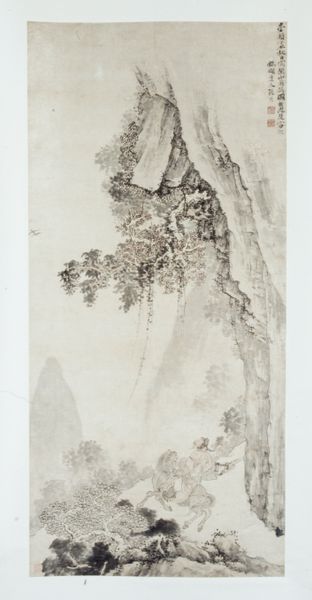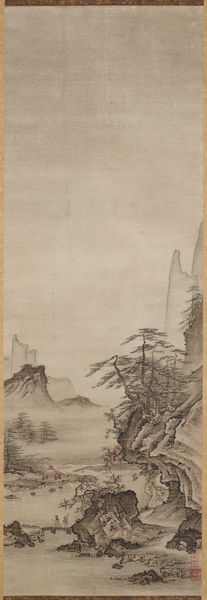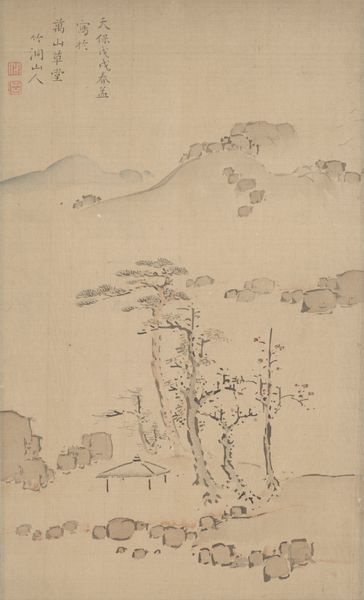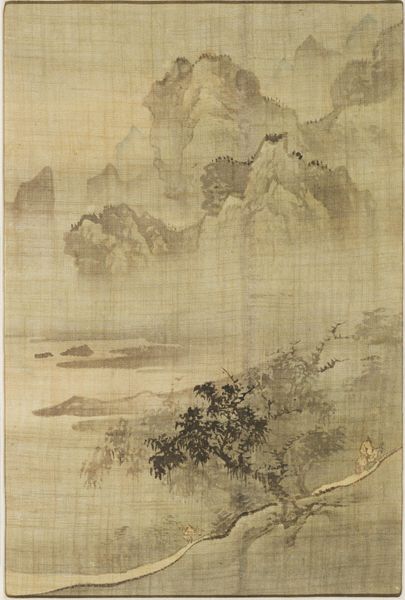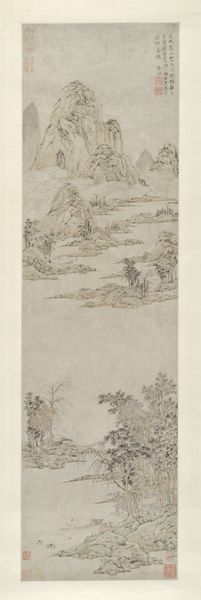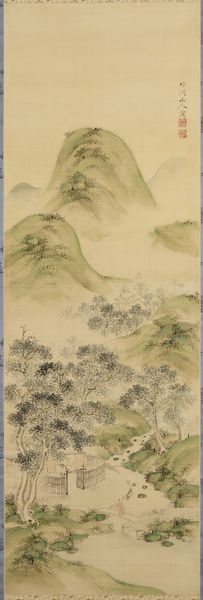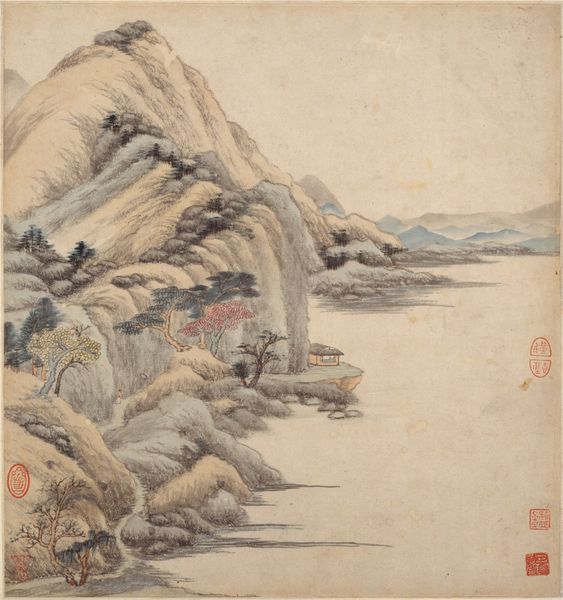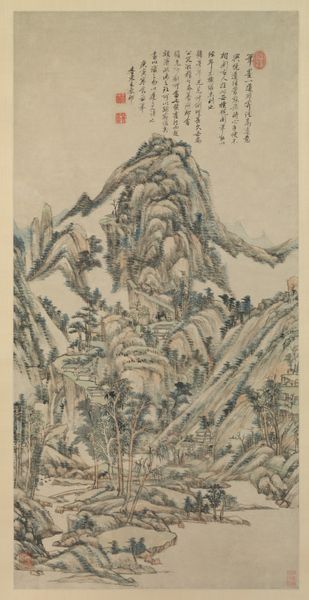
paper, hanging-scroll, ink, color-on-paper
#
ink painting
#
asian-art
#
landscape
#
paper
#
hanging-scroll
#
ink
#
color-on-paper
#
orientalism
#
china
#
watercolour illustration
Dimensions: 43 5/8 x 15 5/16 in. (110.81 x 38.89 cm) (image)89 1/4 x 27 3/4 x 1 1/2 in. (226.7 x 70.49 x 3.81 cm) (including roller)
Copyright: Public Domain
Cai Jia created this painting of "Visiting a Recluse in Autumn Mountains" using ink and color on paper during the Qing dynasty. It reflects the era's emphasis on literati painting, where artists sought to express their inner thoughts and feelings through landscapes. The artwork invites us into a world of solitude and reflection, a common theme during a time of political and social change. We see a scholar journeying through misty mountains to visit a recluse, someone who has withdrawn from society. The high mountains and simple dwelling may symbolize a desire to escape the complexities of the outside world, to find peace in nature and intellectual pursuits. The act of visiting becomes a quest for wisdom and self-discovery. The painting encourages us to consider our own relationship with nature and society. How do we balance our desire for connection with our need for solitude? In what ways does the natural world offer solace and inspiration?
Comments
minneapolisinstituteofart almost 2 years ago
⋮
Underneath the shadows of cloud-encircled mountains, a hermit lives a solitary life amid the trees. This theme has a longstanding tradition in Chinese painting, reflecting the ideal of many educated people to retire into nature for self-cultivation and study. Some retired for religious, particularly Daoist, ideals, that focus on an individual’s harmonious relationship with natural forces. Others retreated in disgust from the ups and downs of professional life. At the bottom left-hand corner, a fellow recluse makes his way up the winding road to visit his friend, an artistic device that offers us entry into the world of the painting. The inscription reads: The mountain is full of trees but empty, and is touched by glorious light from afar. The recluses face each other, forgetting worldly affairs. Right now if we had the fermentation of Xingfeng, we would let loose a long yell, and completely intoxicated, we’d return home. After the brush work of Qian Xuan (1239-1299), Cai Jia, called Zhufang Laomin.
Join the conversation
Join millions of artists and users on Artera today and experience the ultimate creative platform.

